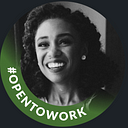Can AI and Machine Learning Make Getting Insured Delightful?
Young people may not get insured because they feel it’s more hassle than it’s worth. AI and machine learning might help that.
Over a zoom call, my friend shared a cautionary tale. She said she knows people that have had to recover losses from theft with crowdfunding because they didn’t have insurance.
This didn’t surprise me.
Some people don’t know that property insurance exists, and some do but assume that it would be prohibitively expensive. Understandably, some can’t afford any insurance, so crowdfunding can become a lifeline. Millennials like myself love the instantaneous connections to community that digital life affords us. It’s not hard to throw our misfortunes up on social media, where friends and family can donate to help at the touch of a button.
But admittedly getting insurance takes a little foresight and A LOT of emotional time and investment.
It’s just not something we want to tweet about.
Most people would agree that prevention is the best medicine, so why are we so reluctant to apply that in minimizing financial loss? I suppose it’s easier to react and ask for help than to be proactive and invest in prevention.
Ironically, crowdfunding is just a new way of financing an old thing called risk management.
In 1716, a group of Presbyterian ministers and their families in Philadelphia started a “Fund for Pious Uses,” to protect the work and ministries of their growing community of believers. Reverend Jedediah Andrews was appointed treasurer and eventually formed a committee, recommending that their network of presbyterian congregations donate annually to the fund. The first recipient of aid was the widow of a deceased minister in 1719, making the Presbyterian Ministers’ Fund one of the first documented forms of life insurance in America.
Even earlier insurance funds compensated for loss from fire to homes, and with the industrial revolution came even more hazards to life and property. Insurance companies began exclusively dealing with risk mitigation and compensation, and as their policies expanded to account for lots of scenarios for casualty and loss, insurance became…complicated.
Let’s just say monetizing what might protect us from events we hope never happen involves a lot of…verbiage. And sometimes mental backflips.
Most people just want getting insured to be straightforward, understandable, and easy.
Before signing up, most of us want to be educated and advised in what we’re signing up for. If an insurance homepage creates a “where do I go from here?” moment, then funky information architecture is probably to blame. Companies that prioritize user-centric information architecture (IA) on their sites and apps come out on top because when you understand your user's needs, you’re able to better serve them.
“What we’re seeing here is something that is going to be very traumatic for the whole insurance space– data is overtaking expertise.”
- Daniel Schreiber, founder of Lemonade Insurance
Assisting good IA is AI.
Now more than ever, providers are using AI (artificial intelligence) to provide fast and easy access to the advice users need when picking a policy. Machine learning algorithms can also leverage an immense amount of customer data to form actionable insights. Why not let real-time data influence user’s premium discounts?
Progressive, for example, has developed an app that rewards its users for driving safely. The app, called Snapshot, uses machine learning, powered by open-source H20.ai to analyze users as they’re driving, using metrics such as hard braking, late-night driving, and frequency of phone use to determine risk.
Personalizing and incentivizing their policies with AI allows for more frequent engagement with their customer base. It’s one way to increase the value of service, if, for instance, the app sends “good report” notifications on how a driver is doing.
Another example is Lemonade’s AI Jim, a bot that uses natural language processing (NLP) to handle and pay claims quickly over chat. In 2019, AI Jim handled nearly 20,000 honest claims, paying out almost $2.5 million, sometimes within minutes, with zero human help.
That’s something to tweet about.
The insurance industry is one that’s by nature mostly low-engagement. There’s a high correlation between low-engagement and turnover when it comes to this type of “investment”, and it’s ripe for an update. Young adults (and everyone) can find value through the immediate gratification that AI and machine learning provides– making insurance feel practical and delightful is important for modernizing its importance.
